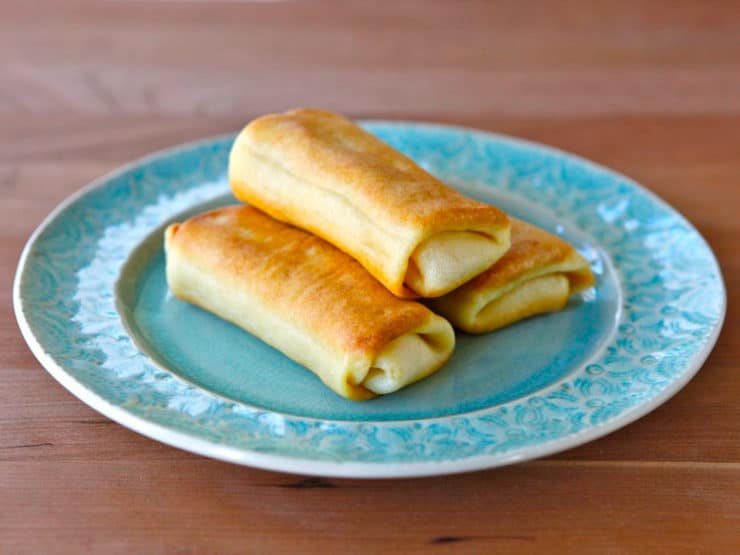
A couple of weeks ago, I was doing some research for my upcoming cookbook when I came across a blurb about Meyer Lansky, a Jewish gangster otherwise known as the “Mob’s Accountant.” I’ve never been very interested in mafia history, and yet this passage stuck with me. Apparently Lansky was a regular patron of Ratner’s, a Jewish dairy restaurant in New York City. Lansky, along with fellow mobsters Charlie “Lucky” Luciano and Bugsy Siegel, were known to frequent the restaurant. Their favorite menu item? Cheese blintzes. Like many well-known personalities of the past, these mobsters saw Ratner’s as more than just a restaurant. It was a place to hang out, chat, and do business, all while enjoying a dose of Jewish comfort food. Though it’s been closed since 2002, mention the word Ratner’s today and faces continue to light up with recognition. How did a little New York kosher dairy restaurant gain such notoriety, in the mob and beyond?
Jacob Harmatz and Morris Ratner, two brothers-in-law, opened Ratner’s Restaurant on the Lower East Side of Manhattan in 1905. As Katz’s Deli became increasingly famous for their tender, juicy pastrami and corned beef, the pair saw a need for a dairy restaurant where vegetarian, cheese, and fish dishes could take center stage. Ratner won naming rights to the Pitt Street restaurant when he defeated Harmatz in a coin toss. The restaurant became well known for its kosher meatless menu, including such Jewish delights as onion rolls, borscht, vegetarian chopped liver, latkes, and a variety of sweet and savory blintzes. Ratner left the partnership and sold his half of the business to Harmatz in 1918, but the restaurant continued to bear his name. That same year, the more well known Delancey Street location opened. In its heyday, Ratner’s served Sunday brunch to about 1,200 people each week. Patrons included such luminaries as Al Jolson, Fanny Brice, Jackie Mason, Elia Kazan, Walter Matthau, Groucho Marx, Robert Kennedy, Nelson Rockefeller… and even the occasional mafia member.
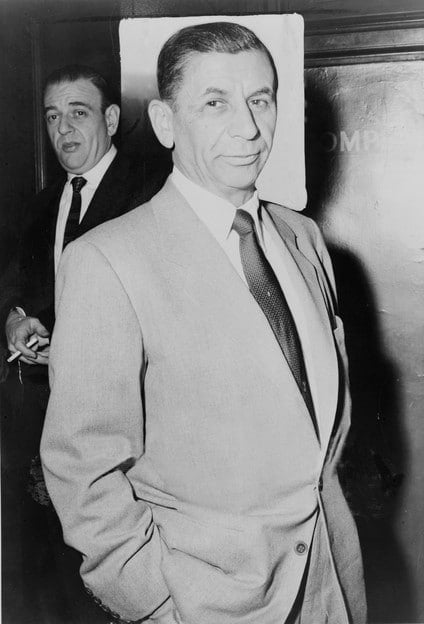
Meyer Lansky, the “Mob’s Accountant,” 1958. Wikimedia Commons
Before Meyer Lansky became the “Mob’s Accountant” and a regular patron of Ratner’s, he was Meyer Suchowljansky, born on July 4, 1902 in Gradno, Poland. The Suchowljansky family was well respected in Gradno, though they weren’t immune to the anti-Semitic feelings of the time. Gradno was considered somewhat safe for Jews until the end of the 19th century, when the Russian Tzar legalized persecution of the Jews living there. At that time, Jewish citizens had three choices – they could stay and endure the oppressive conditions of their home country, emigrate to the Jewish holy land, or make their way to America and start fresh. Meyer’s grandfather Benjamin chose Jerusalem, while Meyer’s father, Max, chose America.
In 1909, Max set off for America alone, hoping to send for his family in Poland soon after. At the tender age of 7, Meyer was forced to become the “man of the house.” By 1911, Max had earned enough to bring his family over to America through the port of Odessa. Meyer traveled overseas with his mother and brother on an overcrowded, rickety tramp steamer. Upon their arrival in America, they settled in a predominantly Jewish neighborhood, Brownsville. Max changed their last name to his wife’s more pronounceable family name, Lansky, presumably to help them fit in better. Max worked hard to support his family, but when times got tough, the Lanskys were forced to move to the Lower East Side tenement district. Meyer became accustomed to a new life without an emphasis on his Jewish faith. Without his grandfather Benjamin around, the family began to lose touch with some of their religious traditions. Instead, Meyer was encouraged to focus on his studies at public school, where he discovered his aptitude for mathematics. This talent would become crucial to his career later in life.
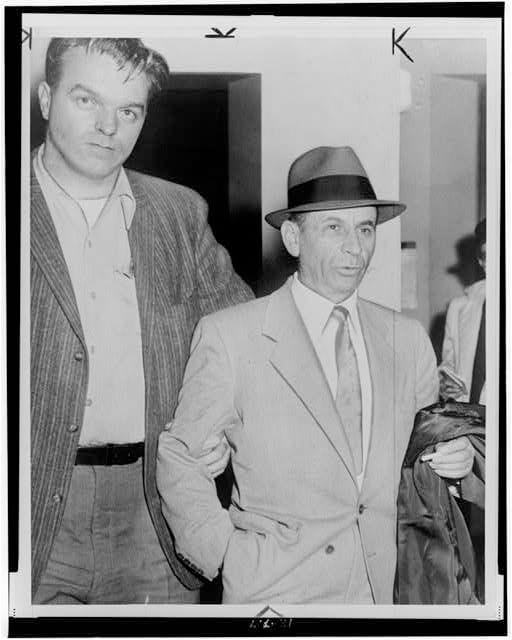
Meyer Lansky, being led by a detective for booking on a vagrancy charge at the 54th Street police station, New York City. Library of Congress
Meyer remained close to his family. One of his main responsibilities was to deliver the cholent for the Shabbat midday meal. He would walk the stew over to a bakery on Delancey street after school on Fridays. For a nickel, the bakery would cook the cholent overnight and have it ready to be picked up the next day. Accomplishing this task for his family was a great source of pride for Meyer. It was on one of his many cholent deliveries that Meyer was introduced to street gambling. He was immediately drawn to the activity because it involved numbers. Soon he was betting his cholent nickels on street crap games. It was here that he began to meet the unsavory characters that would help to shape his career path.
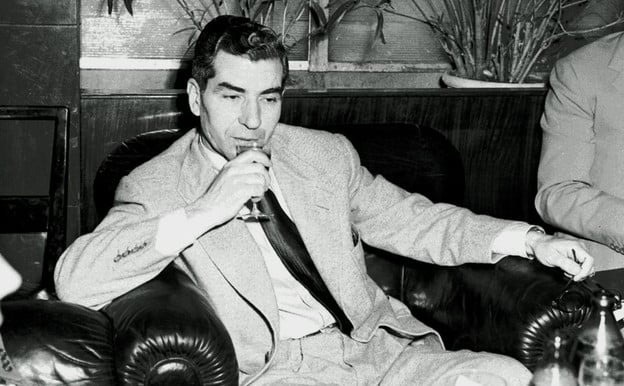
Charles “Lucky” Luciano at the Excelsior Hotel, Rome – June 11, 1948. Wikimedia Commons.
Violence was growing in Meyer’s neighborhood, and organized crime was on the rise. As a teen, he befriended Benjamin “Bugsy” Siegel. Around the same time he also met Charles “Lucky” Luciano, who made money offering protection to Jewish youth from Irish and Italian gangs. Meyer, Bugsy and Lucky became lifelong partners in friendship and crime. Lucky eventually rose to lead the New York Italian mafia, with Meyer and Bugsy by his side.
It was Meyer, Bugsy and Lucky who were often seen together at Ratner’s, noshing on kosher food and quietly discussing their “business.” In a 1997 interview with the NY Daily News, Abraham Reistein, former manager of Ratner’s, reminisced: “we didn’t approach, unless asked,” he remarked, noting that Lansky often ordered “baked whitefish” in addition to cheese blintzes. According to Reistein, if one of Meyer’s bodyguards would show up with blood on his clothes, a waiter would help to burn the evidence in the incinerator. Ratner’s was Lansky’s second home, and people there liked him… so much so that the back room of the restaurant was turned into “Lansky’s Lounge” for a short period of time.
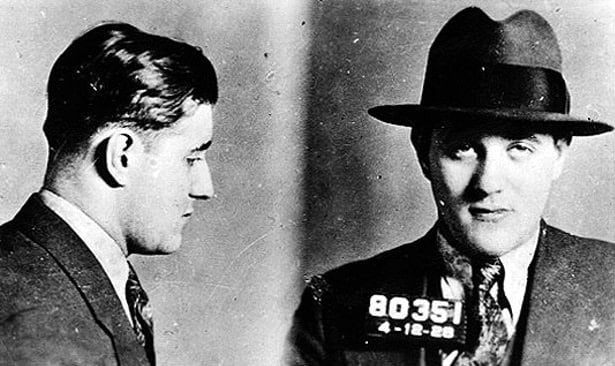
Bugsy Siegel, NYPD mug shot, April 12, 1928. Wikimedia Commons
With his pal Bugsy, Lansky would go on with to become the father of modern day casinos, gaining a reputation as one of the most powerful men in the country. All of this, fueled by Ratner’s blintzes. I couldn’t help but be curious… what did these famous cheese blintzes taste like?
A couple of years ago, I stumbled across a now out-of-print paperback cookbook from 1975 called “The World Famous Ratner’s Meatless Cookbook,” written by Judith Gethers and Elizabeth Lefft. Of course I had to add it to my collection. Here’s a scan of the cover:
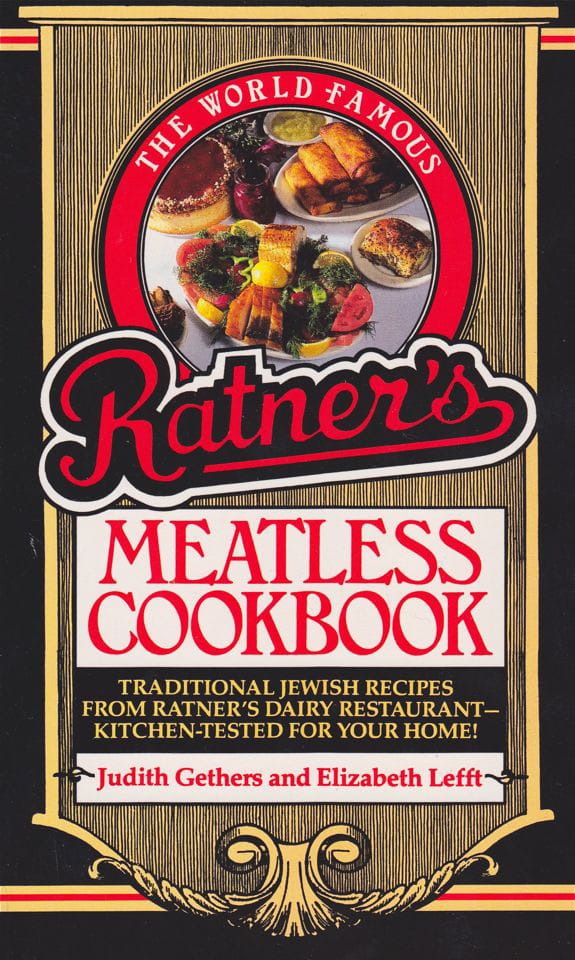
In a section called “Dairy Dishes,” the very first recipe that appears is… you guessed it… cheese blintzes! You know I had to try them, so we can find out firsthand why Meyer, Lucky and Bugsy loved these fried, cheesy delights.
I tested the recipe a few times, and had to tweak the cooking process slightly to make it more foolproof. The Ratner’s blintz batter can be somewhat finicky, especially for those who aren’t familiar with the process. If this is your first time making blintzes, you may want to start with my Cheese Blintzes recipe instead of this one– it’s a little more forgiving and easier to work with. Or you can make the blintzes exactly as written here. The detailed instructions and step-by-step photos should keep you on track.
The Ratner’s cookbook recipe calls for frying the blintzes in clarified butter. To learn how to make clarified butter, click here. I tripled the amount of butter required for frying the blintzes, because in my large skillet the original amount only browned the top and bottom of the blintzes, not the sides. If you’re using a standard-sized skillet, 1 cup should be enough– you want the butter deep enough to brown the blintzes evenly. If you’re worried about the extra calories, these blintzes will cook just as well in grapeseed oil or another oil with a high smoke point. Vegetable-based oils will be less prone to splattering, but the clarified butter gives a nice flavor. For each blintz, I used 3 tablespoons of blintz batter rather than the 2 called for in the cookbook. Otherwise, this recipe is as it appears in the book, along with my own tips and tricks to help you along the way.
Do you have memories of Ratner’s Restaurant? Share them in the comments below!
Recommended Products:
We are a participant in the Amazon Services LLC Associates Program, an affiliate advertising program designed to provide a means for us to earn fees by linking to Amazon.com and affiliated sites. As an Amazon Associate I earn from qualifying purchases.
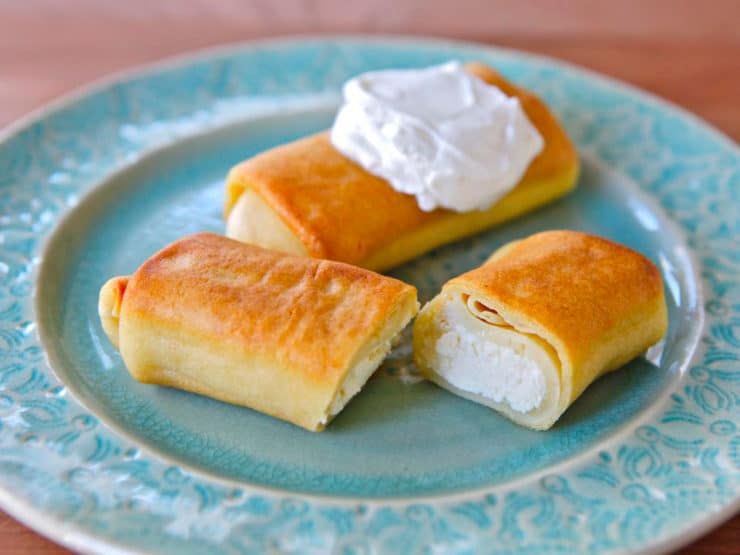
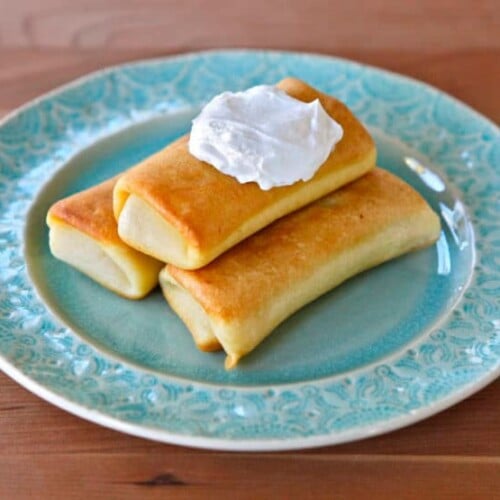
Ratner's Cheese Blintzes
Ingredients
Ingredients
- 2 cups all purpose flour
- 1/2 teaspoon salt
- 4 large eggs, room temperature
- 2 cups water
- 1 cup clarified butter (learn how here)
- 1 pound farmer's cheese
- 2 large egg yolks
- 1/4 cup sugar
- 1 teaspoon vanilla
- Sour cream, applesauce, or your favorite blintz toppings (optional)
NOTES
Instructions
- In a mixing bowl, sift together flour and salt. In another mixing bowl, whisk together the eggs and water till thoroughly blended. Beat the dry ingredients into the wet, whisking thoroughly till the batter is completely smooth with no lumps.Grease a small nonstick skillet and heat between medium and high. The skillet is ready when a drop of water sizzles on the surface. If the water pops or jumps out of the pan, the skillet it too hot—let it cool slightly before starting. If the water sizzles, it’s at the perfect temperature.

- For each blintz, pour roughly 3 tbsp of batter into the skillet, then quickly tilt the pan in a circular motion till the batter coats the entire bottom of the skillet, making a very thin, crepe-like pancake. The batter needs to be added all at once, otherwise it will cook before you've had a chance to swirl it. I measure it out by using a 1/4 cup measuring cup and filling it 3/4 full. It may take you a few tries to get the hang of the process-- proceed with patience!Let each blintz cook for 75-90 seconds until the bottom of the blintz is very lightly golden. You can tell it's ready by touching the center of the pancake's surface-- it should be completely dry to the touch. Do not flip the blintz to cook the other side, and do not let the edges get too brown or dry. Use a spatula to take the blintz out of the pan and place it on a plate.

- Keep the blintzes separated by pieces of parchment paper, wax paper, or paper towels. This will help keep them from sticking together.

- When all of the blintzes are cooked, let them cool while you create your filling. Rinse and dry one of the mixing bowls. Combine the farmer's cheese, egg yolks, sugar and vanilla in the mixing bowl, then use a fork to mix ingredients well.

- Note: Farmer's cheese (also known as pot cheese), while once popular, can be difficult to track down nowadays. It is primarily sold in kosher markets, and has a consistency somewhere between queso panela and ricotta cheese. If you don't have access to farmer's cheese, try using my alternate cheese blintz filling recipe on TheShiksa.com... or use an equivalent amount of ricotta cheese that has been very well drained, using cheese cloth to squeeze and remove as much liquid as possible.

- Now you’re going to stuff and wrap up your blintzes! Place a blintz with the lightly golden side facing down, the less cooked side facing upward. Put 2 tbsp of filling on the lower part of the blintz, about an inch from the edge.

- Fold the lower edge of the blintz up over the filling.

- Fold the sides of the blintz inward, as though you’re folding an envelope.

- Roll the blintz up and over the filling like a burrito, tucking the edges in as you roll.

- When the blintzes are stuffed and rolled, you are ready to fry them. Pour 1 cup of clarified butter or grapeseed oil into a larger nonstick skillet (12 inches) and heat over medium until hot. Do not let the butter or oil turn brown or start smoking. Cook the blintzes in batches of 4 or 5--this will give you space to turn them easily in the pan. Carefully place the stuffed blintzes flap-side down into the hot oil. The blintzes should fry for 1 ½ to 2 minutes until the bottom of each blintz is golden brown and crispy.

- Turn the blintzes carefully using a spatula and/or tongs, then fry for an additional 1 ½ - 2 minutes. Blintzes should be evenly browned on both sides.

- Let the fried blintzes drain on a layer of paper towels.

- Serve blintzes warm. They can be served as-is or topped with fruit topping, sour cream, applesauce, whipped cream or maple syrup. Apparently Meyer Lansky liked his topped with sour cream.

Nutrition

tried this recipe?
Let us know in the comments!
Research Sources
Gethers, Judith and Lefft, Elizabeth (1975). Ratner’s Meatless Cookbook. Ballantine Books, Random House, New York, NY.
LowerManhattan.info: Ratner’s Closes, for the Last Time. December 16, 2004.
McAlary, Mike (1997). “Old Mobster’s Lounge Act Meyer Lansky Still Able to Make Money.” New York Daily News, February 28.
Mendelsohn, Joyce (2009). The Lower East Side Remembered and Revisited: A History and Guide to a Legendary New York Neighborhood. Columbia University Press, US.
Montague, Art (2005). Meyer Lansky: The Shadowy Exploits of New York’s Master Manipulator. Heritage House Publishing Co. Ltd.
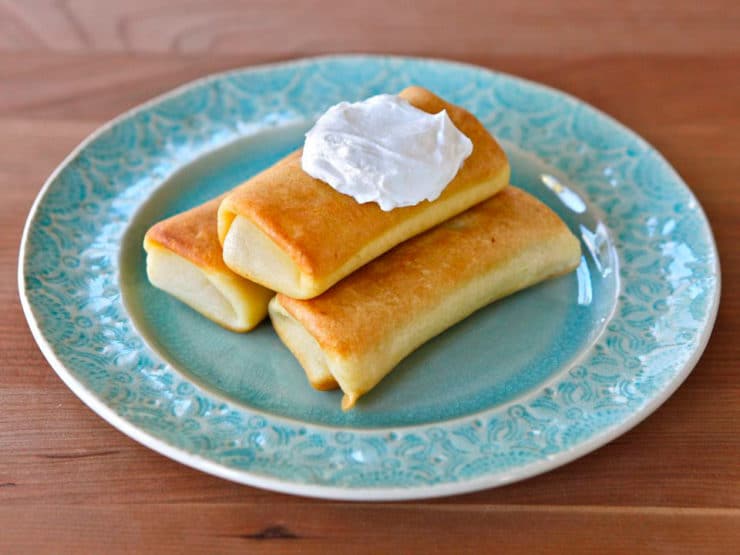

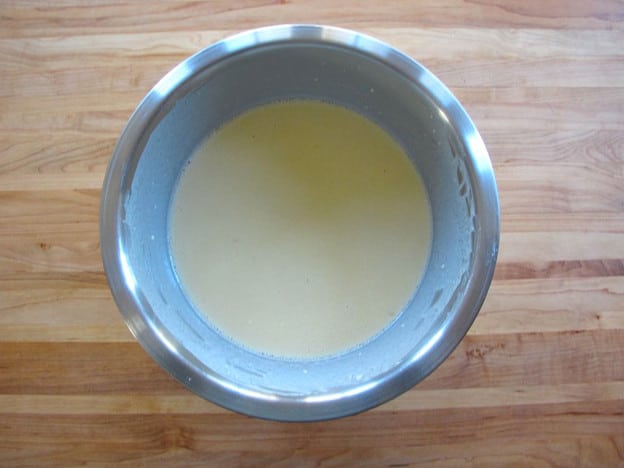
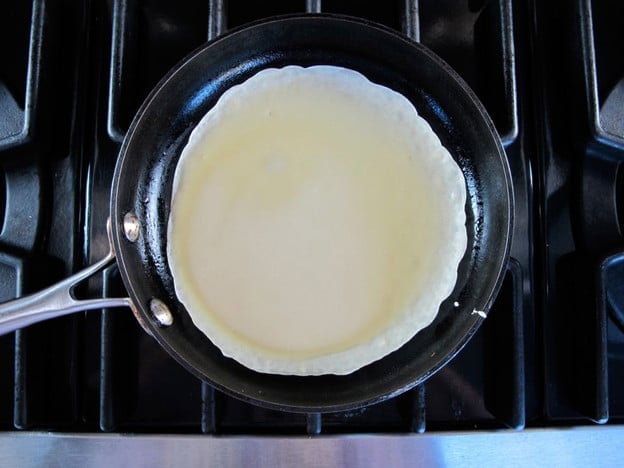
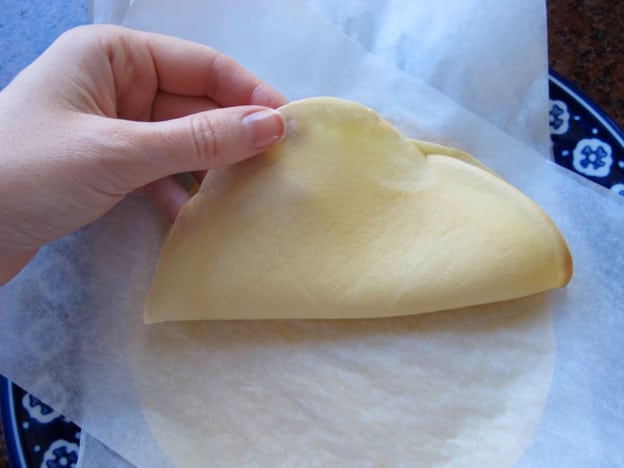
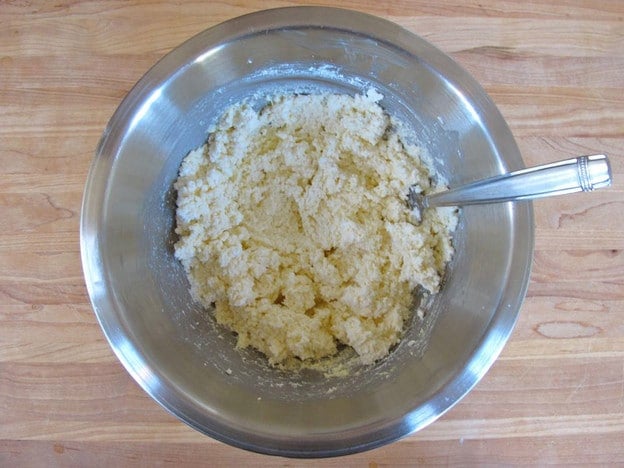
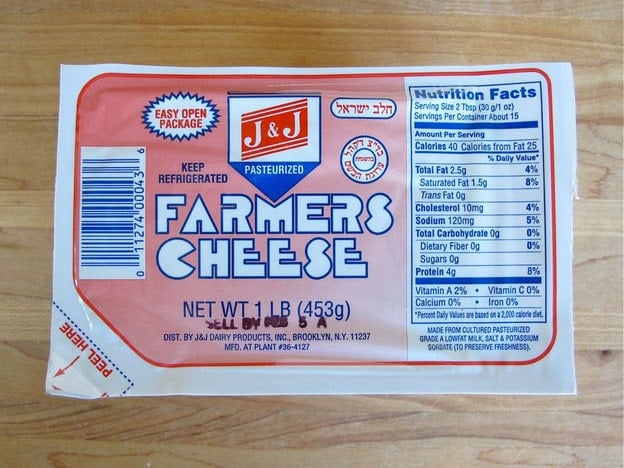
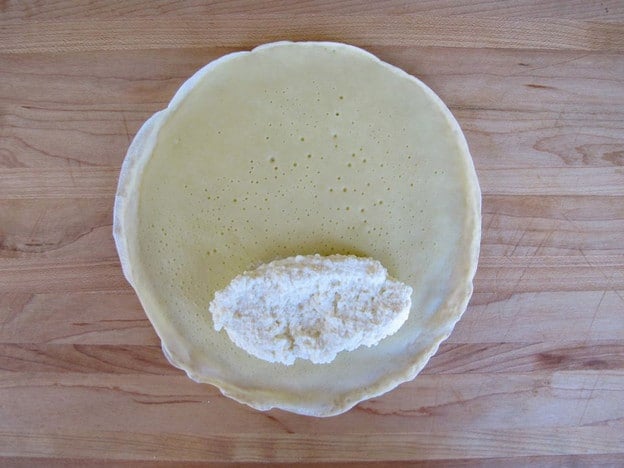
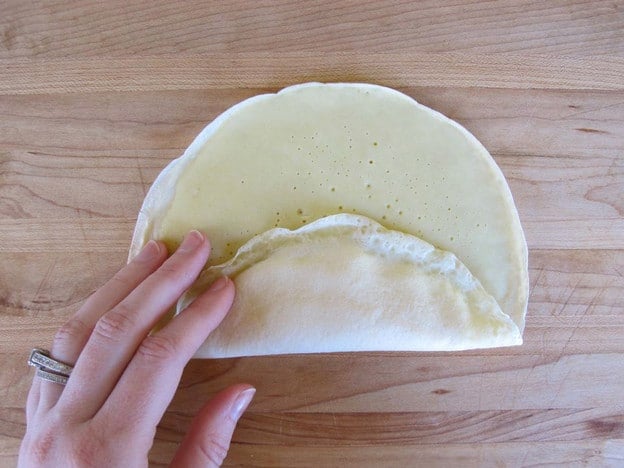
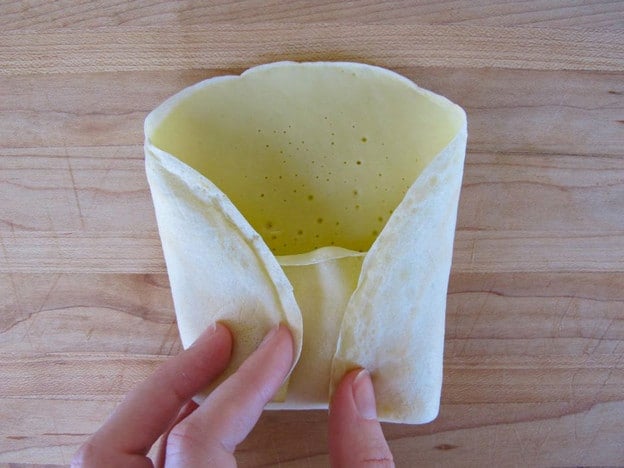
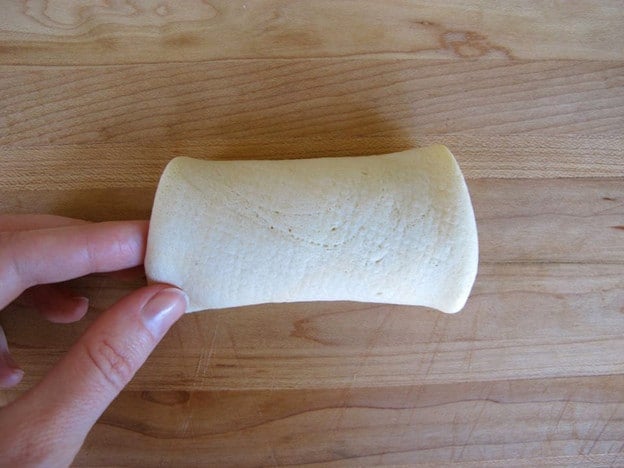

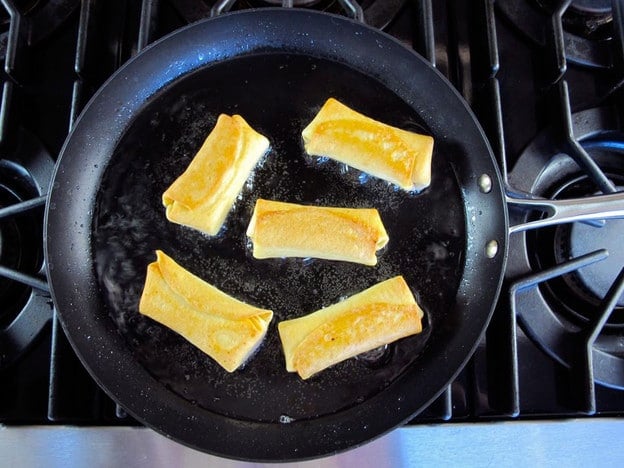
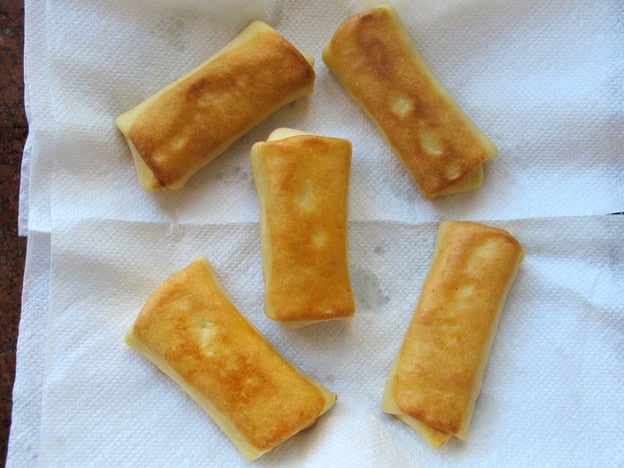
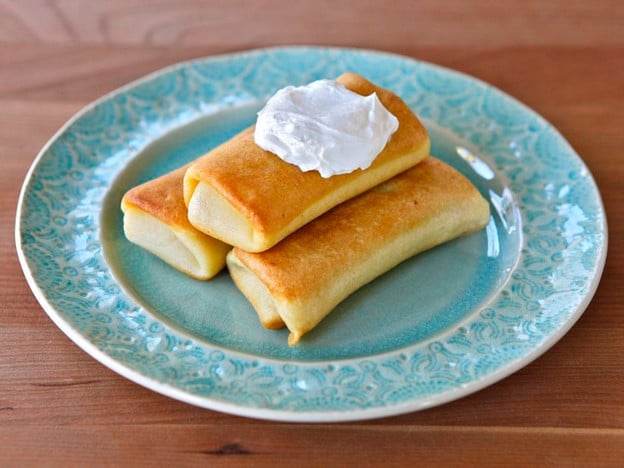


I wasn’t able to find farmer’s cheese, but these were AMAZING with just ricotta. I went to the extra effort of using clarified butter despite being skeptical that it would actually make that big of a difference, but omg it really took the recipe to a whole other level. It has been months since I made these, and my mouth still waters just remembering them. I’ve been looking for an excuse to make more ever since!
Great Darbi! Glad these were worth the effort.